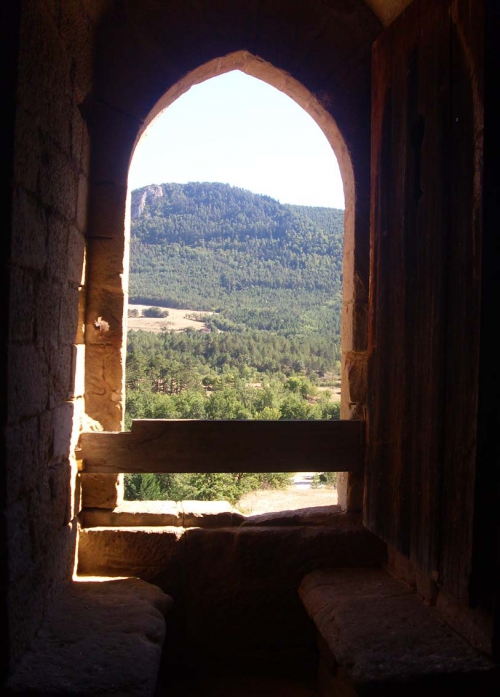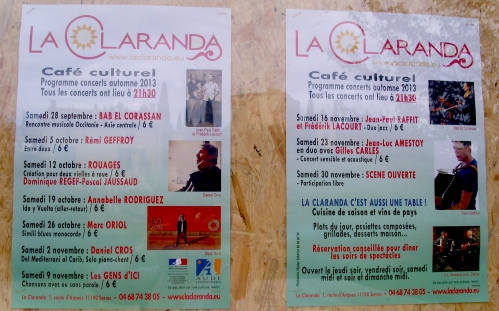ADVENTURES - Arques and Serres
The Cathar Pope
It looks as though my previous life was acquainted with Déodat Roché, the well-known "Neo-Cathar" who lived most of his life in Arques, the small town on the Narbonne - Mouthoumet - Couiza road. Here's a view of Arques . . .
You can just see the donjon of Arques middle-right, and Rennes-le-Château in the distance. This view is visible after you start coming down from the Col Du Paradis, the highest point on the D613 road.
Déodat Roché knew the priest of Rennes-le-Château, Bérenger Sauniére, around the turn of the century. Déodat was a wealthy lawyer, as was the Cathar he could have been reincarnated from, Pierre Authié, and his house is now the museum of Catharism in Arques. Beside it is the house I believe was once a safe house for the Cathars of the early 14th century, owned by people from Montaillou in the Ariège.
Déodat Roché was the man who erected, or campaigned to have erected, the famous stèle at Montségur, to mark the place where some 200 Cathars were burned alive for their "heresy."
The famous donjon of Arques is a little further on, on the right. It was built by the local aristocrat around 1295, while the safe house where the Authié brothers often stayed there when hiding from the Inquisition, was in use in the early days of the 14th century.
Apparently the donjon was built later than the surrounding wall, implying that a manor house was here first, but by the time of the last decade of the thirteenth century the village might have felt they needed protection; but from whom? There is an amusing tale of Cathars travelling in secret after dark, to go from Arques to Cubières, where lived "the last Cathar", Bélibaste, when they met some soldiers coming back late, so they pretended to be merchants and travelled with them and chatted until the soldiers turned off for the donjon. Whew!


This tower is often quoted in Tourist brochures for "Cathar Country" - but it is not Cathar.
Serres
We continued to Serres, well-known for its Roman bridge. It had three arches. The Romans built their bridges with either three, or five or seven arches, according to how important the bridge and the route were. This was kinder on the men and the animals than a hump-backed bridge. This bridge is not the original, but has been reconstructed over the years to the same style.
And there we found a "Cultural café." What is a cultural café? It's one where Occitan music is played. They also do excellent lunches.
In the depths of the Corbières the Occitan culture is alive and well. Serres is also interesting because it has a little turret on the side of the castle and some people think Bérenger Saunière signalled with this castle from the Tour Magdala. My friend Kris Darquis says; "Have a look around the centre of the village next time and look for the Templar Cross." I will.
(I did! You can read much more about Serres by clicking here.)
Inscrivez-vous au blog
Soyez prévenu par email des prochaines mises à jour
Rejoignez les 28 autres membres










